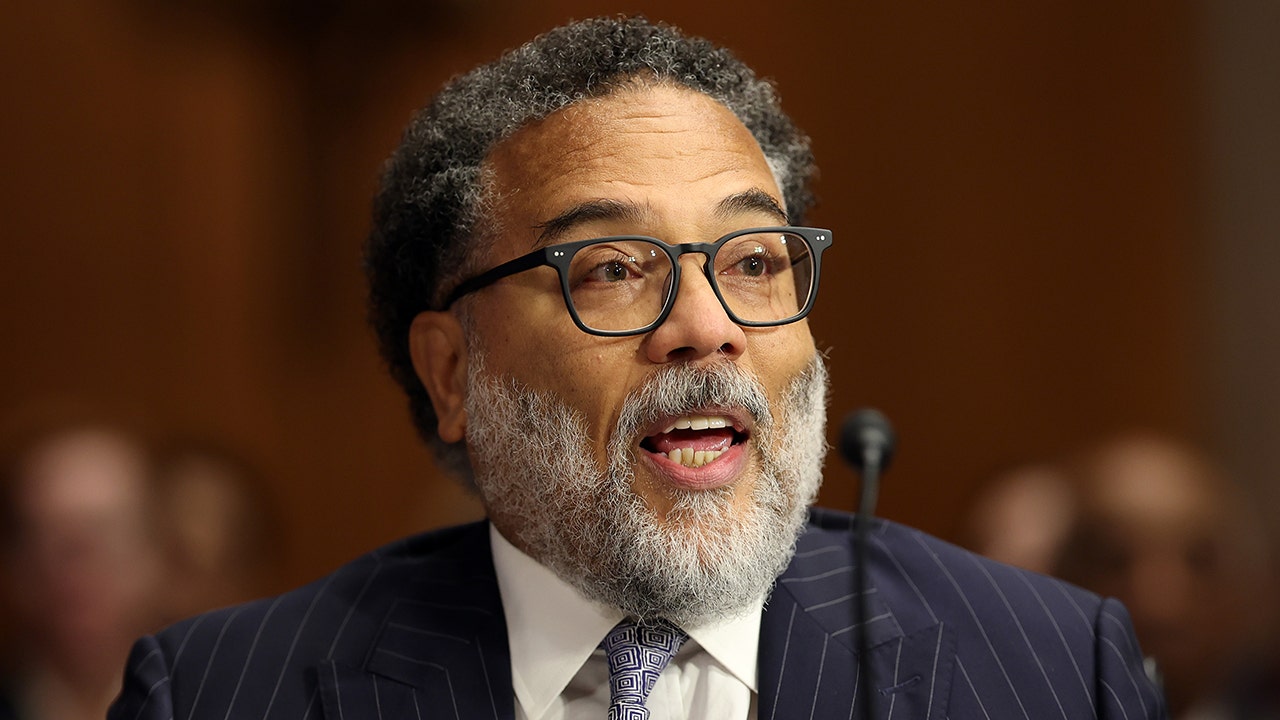Education
Opinion | What Teaching History in Texas Looks Like

Much like in Florida, the fight over public education in Texas has become a lighting rod in the country’s culture wars. Seventh-grade social studies teachers, who teach a full year of Texas state history, are required to describe the defenders of the Alamo in a “heroic” light.
I attended Robert E. Lee Elementary School, in Austin, where I learned history according to what was then the state’s history curriculum. In 2016, the school, which my niece now attends, was renamed Russell Lee Elementary.
The name change meant that people could still call the school “Lee” for short, but rather than honor the confederate general, the name would now pay tribute to a Depression-era photographer best known for documenting the struggles and resilience of Americans during the 1930s and 40s.
After World War II, Russell Lee would settle in Austin and start the photography program at the University of Texas. I now teach in the photography program that Russell Lee brought into being.
I was curious to see how the school had changed since my time there. I was especially interested in one aspect of the Lee curriculum: its “programs,” or plays that students in each grade level perform throughout the year for the rest of the school. Staged for generations and a Lee hallmark, the shows run for roughly 45 minutes, bringing together song, practiced in music class, dance, rehearsed in P.E., and narration, memorized for homework and then recited during the performance.
The programs not only provide a chance for students to perform in front of their fellow students, they engage the schools’ students across subjects and disciplines. “They represent an opportunity for teams to work together and to have students across a grade level embark on a shared goal that’s very tangible,” Caitlin Sileo, the school’s principal, told me.
After a two-year hiatus brought on by the Covid-19 pandemic, the programs returned for the 2022-23 school year. After jumping through some bureaucratic hoops, I received permission to photograph the rehearsals for the Lee programs.
While the Dinosaur Program and Shakespeare Program remained largely unaltered, other changes since I was a student were obvious. When I was in the first grade, I performed in the Thanksgiving Program. That program has been replaced with one centered around Social-Emotional Learning. A new “Her-story” Program for third graders has taken the place of the Hawaii Program. (No one seems to know why, for decades, a bunch of kids in Texas performed a play about Hawaiian statehood.)
And, for now, the school has shelved the fifth grade’s African-American History program. The play was meant to celebrate Black contributions in art, technology and culture, but Principal Sileo wanted to make sure that the majority-white campus honors African-American culture in a conscientious way that doesn’t alienate Black members of the community. Prior to the pandemic, there was talk of reimagining the show as a Black Heroes Program.
“I think it’s really important that we’re mindful about our role and what we’re saying to students,” Ms. Sileo, the principal, said. “As a staff, we are continuing to think and learn and refine. It’s not a destination. It’s a process.”
The programs as a whole are a fascinating opportunity to visualize how rather than being fixed, cultural reproduction and collective identity are performed over and over again. Through performance, we become living embodiments of our past. Or at least, an interpretation of it.
The overall structure of the Texas State History Program remained similar to when I was a student starting in the mid-’90s, with some key changes. I noticed there was added emphasis on the diverse range of people who have lived in the state and region, as well as the achievements of Texans of color. Also the scene depicting the Battle of San Jacinto had been restaged from a gun battle between Texian, as they were called, and Mexican troops, to a depiction of Santa Anna surrendering to Sam Houston. For one of the dance numbers, the song “Cotton-Eyed Joe” had been removed because of its connections to slavery and students now perform the schottische instead.
While working on this project, I’ve often thought about how and when I will talk to my own son about the realities of our country’s history. Is it possible to tell the whole truth without completely scarring him? How can I make him aware of the violence, racism, sexism, discrimination and intolerance that have shaped Texas and the country at large without crushing any sense of hope or optimism that he and I have? Or maybe I just need to trust that, if he learns enough of the noble things that America represents — tolerance, freedom, inclusion — he’ll be able to figure it out for himself.
When the school board decided to rename Lee, they also voted to rename the kindergarten wing of the school after Bettie Mann. Ms. Mann worked at Lee for 37 years, starting as a substitute then transitioning to a full-time kindergarten teacher. She was the school’s first Black educator. Amidst all the renaming, I couldn’t help but think about the question posed in the sixth-grade rendition of “Romeo and Juliet” in the Shakespeare Program: “What’s in a name? That which we call a rose, by any other name would smell as sweet.” In this context, Shakespeare couldn’t be more wrong.
Eli Durst is a fine art photographer based in Austin where he teaches at the University of Texas. His second monograph, The Four Pillars, was released in 2022.
The Times is committed to publishing a diversity of letters to the editor. We’d like to hear what you think about this or any of our articles. Here are some tips. And here’s our email: letters@nytimes.com.
Follow The New York Times Opinion section on Facebook, Twitter (@NYTopinion) and Instagram.

Education
Video: Several Killed in Wisconsin School Shooting, Including Juvenile Suspect

new video loaded: Several Killed in Wisconsin School Shooting, Including Juvenile Suspect
transcript
transcript
Several Killed in Wisconsin School Shooting, Including Juvenile Suspect
The police responded to a shooting at a private Christian school in Madison, Wis., on Monday.
-
Around 10:57 a.m., our officers were responding to a call of an active shooter at the Abundant Life Christian School here in Madison. When officers arrived, they found multiple victims suffering from gunshot wounds. Officers located a juvenile who they believe was responsible for this deceased in the building. I’m feeling a little dismayed now, so close to Christmas. Every child, every person in that building is a victim and will be a victim forever. These types of trauma don’t just go away.
Recent episodes in Guns & Gun Violence
Education
Video: Biden Apologizes for U.S. Mistreatment of Native American Children

new video loaded: Biden Apologizes for U.S. Mistreatment of Native American Children
transcript
transcript
Biden Apologizes for U.S. Mistreatment of Native American Children
President Biden offered a formal apology on Friday on behalf of the U.S. government for the abuse of Native American children from the early 1800s to the late 1960s.
-
The Federal government has never, never formally apologized for what happened until today. I formally apologize. It’s long, long, long overdue. Quite frankly, there’s no excuse that this apology took 50 years to make. I know no apology can or will make up for what was lost during the darkness of the federal boarding school policy. But today, we’re finally moving forward into the light.
Recent episodes in Politics
Education
Video: Los Angeles Bus Hijacked at Gunpoint

new video loaded: Los Angeles Bus Hijacked at Gunpoint
transcript
transcript
Los Angeles Bus Hijacked at Gunpoint
The person suspected of hijacking a bus which killed one person, was taken into custody after an hourlong pursuit by the Los Angeles Police Department early Wednesday morning.
-
“Get him.”
Recent episodes in Guns & Gun Violence
-

 Business7 days ago
Business7 days agoThese are the top 7 issues facing the struggling restaurant industry in 2025
-

 Culture7 days ago
Culture7 days agoThe 25 worst losses in college football history, including Baylor’s 2024 entry at Colorado
-

 Sports6 days ago
Sports6 days agoThe top out-of-contract players available as free transfers: Kimmich, De Bruyne, Van Dijk…
-

 Politics5 days ago
Politics5 days agoNew Orleans attacker had 'remote detonator' for explosives in French Quarter, Biden says
-

 Politics5 days ago
Politics5 days agoCarter's judicial picks reshaped the federal bench across the country
-

 Politics3 days ago
Politics3 days agoWho Are the Recipients of the Presidential Medal of Freedom?
-

 Health2 days ago
Health2 days agoOzempic ‘microdosing’ is the new weight-loss trend: Should you try it?
-

 World7 days ago
World7 days agoIvory Coast says French troops to leave country after decades














